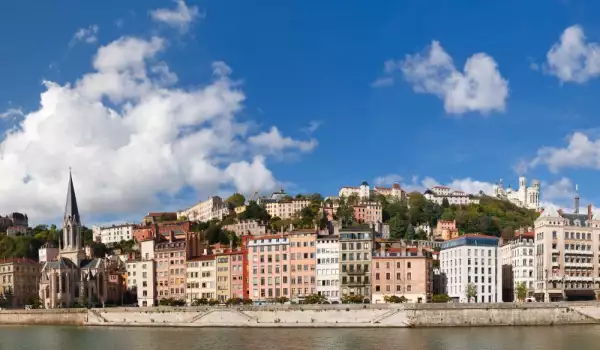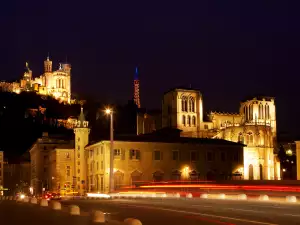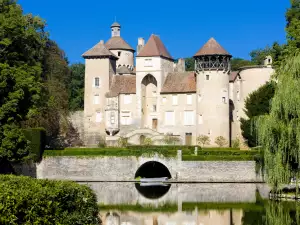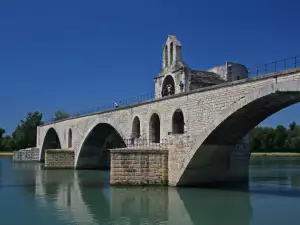Lyon

Lyon is the birthplace of the genius author Antoine de Saint-Exupery. This seemingly inhospitable French city is actually one of the most interesting and rich in history settlements in this part of Europe. Lyon is one of the capitals of art, history, but ultimately Lyon is worker’s city. Near Lyon rises Fourviere hill, offering magnificent views over the city and its surroundings. If the weather is nice, you can go to the Alps and the peak Mont Blanc. On Fourviere are located the television tower of Lyon and Basilica Notre Dame.
On the same hill you can see the amphitheatre. Today its beautiful location is used for the arena of quite a few festivals that mark the establishment of music, movies and theatre. Near it you can see the Gallo-Roman museum, which will charm you with its beautiful architecture. It is considered one of the most beautiful museums of France. Another hill, which dominates Lyon La Rose is La Croix Rousse, which is known as "workers 'hill'. In the 19th century, it is a component of Lyon and there began to develop an intensive textile industry, the production of different fabrics and materials as a special place is given to the Lyon silk.
Lyon is a wonderful city that rightly can be likened to a museum. Lyon is the capital of the region Rhône-Alpes, which occupies the south eastern part of France. Located in an area of 47.95 sq km, there are about five hundred thousand inhabitants. This is the second largest industrial centre after Paris and ranks eighth in Europe in economic indicators. Lyon lies 470 km from the French capital Paris, 320 km from Marseille, 160 km from Geneva. From Turin it is 280 km, 450 km from Milan and 600 km from Barcelona.

The history of Lyon began as a Roman colony in 43 BC. The original name of the village was Lugdunum. This was actually the name of one of Caesar's lieutenants, and the literal name means "hill of lights". Over the next centuries Lyon is quite a turbulent and intriguing city, being the capital of Gaul. After the French Revolution, the textile industry in this part of France gradually began to decline and this reduces the renowned quality and beauty of Lyon silk. During World War II Lyon is the centre of resistance. In connection with the violent actions in these years, today in Lyon there are several museums that tell the detailed history of the city and its role in the war against the Germans.
In Lyon there are many attractions such as museums and cathedrals that are worth a visit. One of the nicest places to walk in the city are the old section with its pretty and picturesque streets. In older neighbourhoods like Saint Paul, Saint-Jean and Saint-Georges, you can see the unique architectural monuments and buildings in Renaissance style. Particularly inspiring is the view of the coastal zone of Lyon. The rivers Rhone and Seine pass through the city, and many bridges were built over them, which are among the most beautiful and finest in Europe.
Do not miss the spacious central square in Lyon. Here is the city hall, located between the opera and the new Square Terra. On Terra you can see a nice fountain - Bartholdi, and explore the museum Saint-Pierre, which is considered "Lyon’s Louvre. In Bellkur square, you can see the statue of Louis XIV, and two sculptures, located east and west from the central figure. They symbolize two rivers - the turbulent Rhône and the tranquil Seine. The same square is occupied by a statue of Exupery and The Little Prince. In Lyon there is a boulevard that bears his name on which is located his house-museum.















